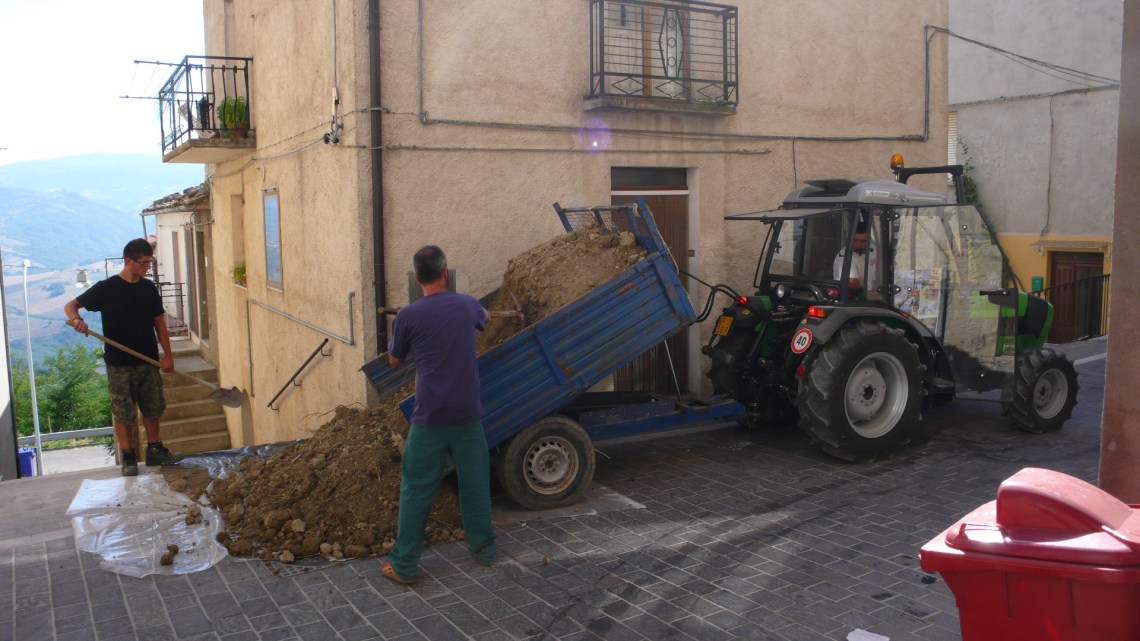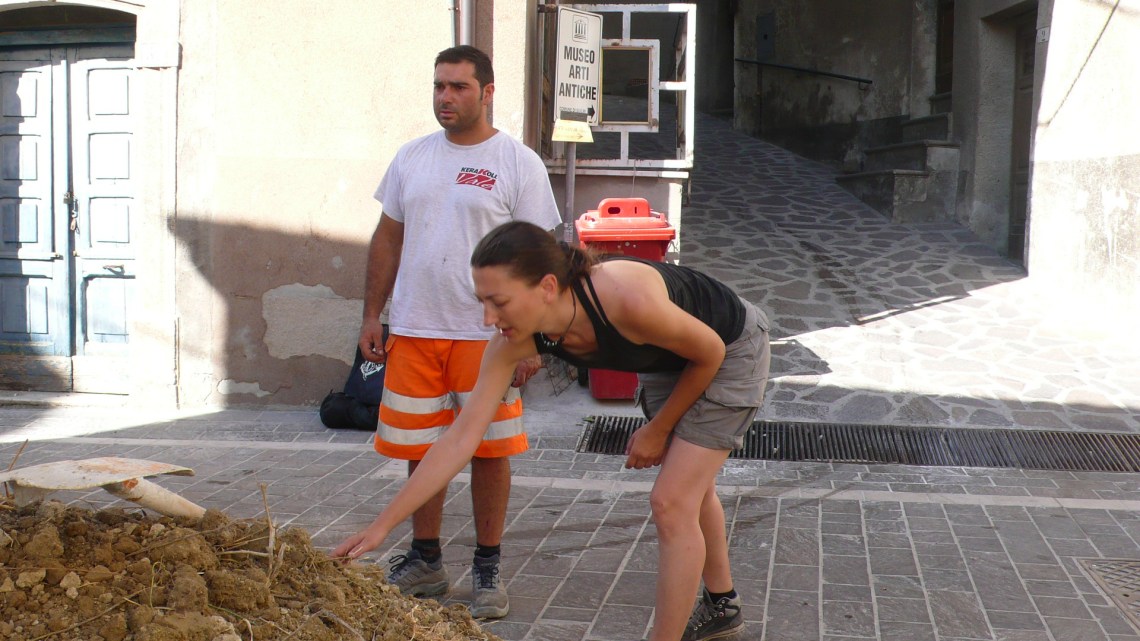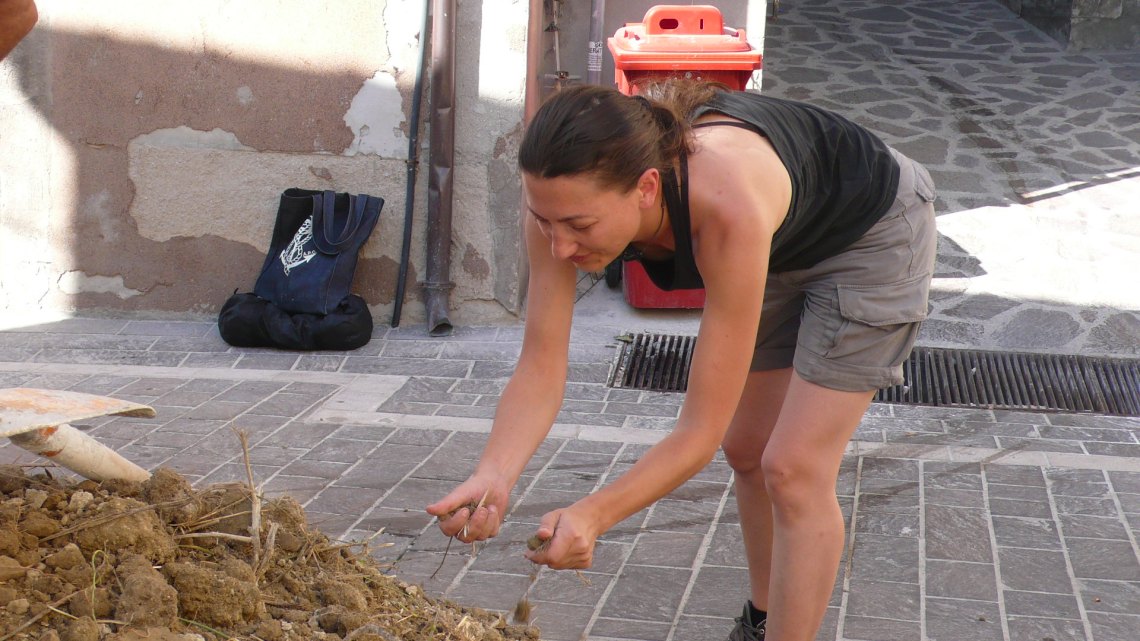Un’intervista in inglese di Amy Tanzillo ad Emanuela Ascari. Nel caso la voleste in italiano, non provate a tradurla con il traduttore di google, ma contattateci a guilmiartproject@gmail.com.
The work of Bologna native artist Emanuela Ascari has always been deeply concerned with notions of history, culture, and the passage of time. She arrived in Guilmi (Abruzzo) in late July to start a month-long artist in residency program as part of the Guilmi Art Project (GAP), in collaboration, for the year 2012, with Vis a Vis, a complex project including four artists and villages, two regions, the Ministry of Youth, and many other partners. She was convinced she would encounter these notions again – the question was, how? Ascari began her artistic research by asking the locals of the miniscule mountaintop village what they knew about their history. The responses were varied, but one thing was clear: what little the Guilmesi know about their history is based on a pair of verses in a folk song passed down through the generations. The verses tell of sort of “legend of Guilmi” that saw the transfer of the old riverside village of Tripaldi to the hilltop where Guilmi sits now. Intrigued by the mystery behind this legend, Ascari set out to discover what secrets Guilmi and the ruins of Tripaldi might reveal. Three and a half weeks later, Ascari’s diligent and passionate research has manifested itself into a cube, one square meter in size and made entirely of packed local earth, resting imposingly in the La Pitech gallery, in Guilmi.
In an interview conducted on August 9th, 2012, just four days before the presentation of her work to the village of Guilmi, during a trip to select the soil to be used for her work, Ascari gave me some insights on her work process, her inspiration, and her discoveries during her artist in residency in Guilmi.
Amy Tanzillo: So a lot has changed over the past week – a week ago you still didn’t have a clear idea of what kind of work you would be creating and presenting, and now all of that is sorted out.
Emanuela Ascari: Yes, well originally we were working with more than one idea – the first, history. For example, the place we discovered, Tripaldi… had a time when the people lived there, and they had to move to another place. Now, in the last fifty years in Guilmi, it’s quite the same, because of the change of the economic landscape… Guilmi has also had over the last fifty years a process of abandonment… And so I had some ideas, and I’ve had to decide what to do in the timeframe of the residency. On one side I would have liked to work in different places in Guilmi, and to make some little installations in relation to history and memory; it would have been a sort of cleaning of layers of dust (in the case of the houses) and rubbish – cleaning the layers of abandonment. It is a theme that I have applied to archaeological excavation – you take away the layers of time. So, we have spoken with Lucia [Giardino] and Chico [Bacci] a lot about how archaeological discovery or an archaeological point of view could be important for the people of Guilmi. Here there is not a conscious relationship with history.
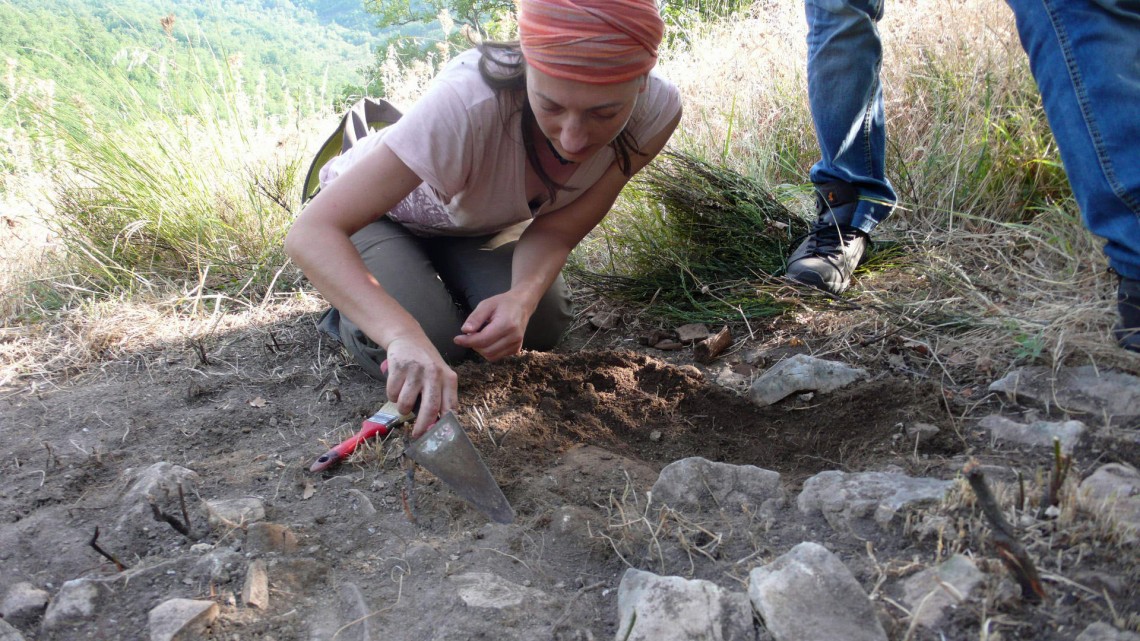
AT: Yeah, it definitely seems that way – they are not really aware of their own heritage.
EA: They know only some verses of a song that tell about Tripaldi, the ancient Guilmi for them (but I don’t know if this is true), which was abandoned because of the invasion of grasshoppers; others say because of the invasion of ants. They say that the name Guilmi comes from the word for an elm tree, called olmo, which is kind of the same – Guilmi, olmo (laughs) – it’s like a fantasy-history. But if you talk with old people here, they know about the real Tripaldi. Probably when they were young, they were working in the fields, exploring the territory, the landscape, so they know; they have seen (some of them) the ruins that I have discovered. So, it’s not a real discovery.

AT: Right, you “discovered” it, but they already knew.
EA: So it’s interesting, this process, because nobody talks about that, but inside they know, but they don’t care about it – it’s a strange process. I would like to show it, but in a not-so-documentary way… In relationship to the other works that I’ve done, I decided to make an inverse process – not to show the documents, the artifacts, but to conceal them. That is a part of the archaeological method, because… when it’s not possible or necessary to keep an excavation accessible to the public… after the dig, they re-cover the site, because the earth preserves. Earth moves, it changes, it breaks, but under it, there is life, but also our history, our culture…. I like this earth, so I decided to use it, but I had to choose a form.
AT: Form is so important – how did you decide which direction to take?
EA: Okay so to be conceptual, you could come into the landscape and see nothing (laughs) – or, I can make more of a sculpture, an installation-sculpture. I decided on the second… a cubic meter of earth, because it’s a unit of measure of landscape, of culture, of history… So I keep one cubic meter of earth, and I will declare that I put the artifacts inside, even if nobody can see them; probably I’ll make an index to refer to which pieces are inside. But here starts a discourse about what is real and what is fiction in art. Art usually makes fiction – art explains, represents something that is real and makes it conceptual. I try to make the contrary, to make a something real into fiction. No wait (laughs) – it will seem fictional, but it is real. The artist usually makes something that seems real, but is fiction. I make something that is real, but it seems fictional. (Laughs) “Lost in translation” – it would be a nice title… When you find an artifact, you have to find its meaning, its significance in history, but sometimes you have a lot of documents, you compare them, but you can never really be sure – it’s quite impossible. And so, this process of giving a meaning is a translation. You have a piece of something and you conceptualize it, it’s like a translation. Every time you lose something, so there is also that… but anyway, blah blah blah (laughs).
AT: (Laughs) So the artifacts really will be inside, right?
EA: Aaaaaah! I don’t know, you know?
AT: Yeah, because that was the whole discussion last week – what to do with the artifacts you found, and if you take them from where you originally found them, would you have to put them back? It’s really complicated.
EA: Yes. This is another aspect, also – every time you do an archaeological dig, and you take something away from the earth, you cancel it out. Archaeological research grows from destroying, and a lot of my work is about construction and destruction, this relationship. Really, by keeping [the artifacts], I have destroyed, cancelled history.
AT: You can never put them back; it will never be the same.
EA: I can never put them back because I have made an interference… Okay, my excavations were like tiny samples, superficial excavations in the first layers of earth – because I didn’t want to cancel too much. We have started also a real process of consciousness because we have notified to the Archeological Sovrintendenza that we have found ruins. We talked with an archeologist, he came, we showed him the ruins, yesterday the inspector arrived… So now, it’s real… My difficulty was that it was too real. All the material on which I have worked was too real.
AT: It seems like it’s been such a long process – you’ve only been here for about three weeks, but it’s been a crazy process from the first days when you were traipsing around the forest outside Guilmi. It must feel good to see that process start to be realized into an actual work.
EA: Yeah, and if I had time, I would make also another work, but I don’t think I have time. If I finish the cube in two days, and I have one day more, I could complete the work with another point of view.
AT: Yeah, but you might find time, especially since during this project, it seems that you worked mainly by “encounters” and chance– you had an idea of what you concepts you wanted to work with, but because nothing was concrete, each time you did a dig and found new things, it seemed that your ideas about your project were changing and growing. Do you normally work in that way?
EA: Yeah, my work is process-based. In the end, it is a piece of artwork, but that is the final formalization of a process. For me, it’s normal, this method. I find something and get an idea, then I find something else and my idea changes, and so on… I have an idea, I have to find a way to realize it – that is the manual part, working with the earth and technical aspects. It’s not just conceptual.
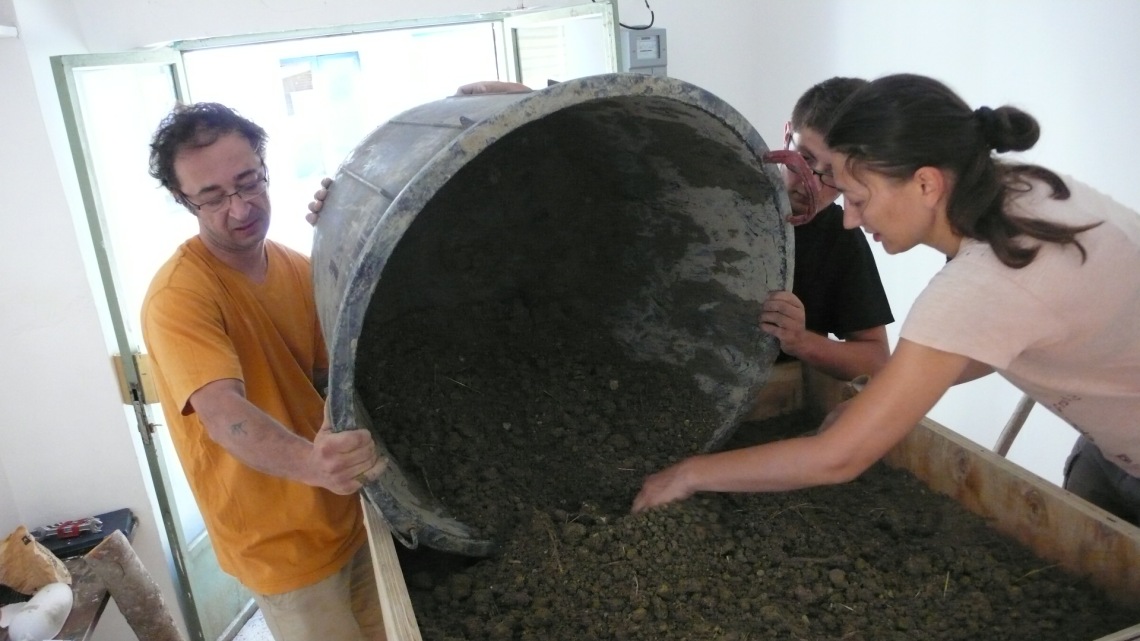
AT: How do you think the people of Guilmi will react when they see all the work you’ve been doing?
EA: I don’t know. Firstly, we thought about having the people of Guilmi give input, to give us or the municipality here the things they had found during their agricultural work, for example. But, probably it would have been a mistake. Sure, we would have liked that the people gave an input consciously, to understand that inside the earth there is history, and that is important for them – but, I decided not to show them and not to stimulate this process of keeping the pieces and showing them… to imagine it, rather than seeing it, is more functional. And the other part is that I don’t want to make didactic, educational art for the community. I think that art can be educational, but in another way, the way of stimulating the imagination, the “possibility of.”
AT: This will keep people thinking for a long time, it raises questions instead of closing all the doors on the discussion of history and culture.
EA: I think that art, but not only art, could give them questions, not answers. Probably, I am sure, that when the people of the community of Guilmi see the work, they will give it more significance, because I’m sure that they have other considerations. I’m sure that they will add to it other aspects, other visions, from outside my process.
Emanuela Ascari
Luogo Comune – Apparentemente Privo di Narrazioni Forti
Inauguration August 13, 2012, 6pm
La Pitech
Via Italia 30, Guilmi


